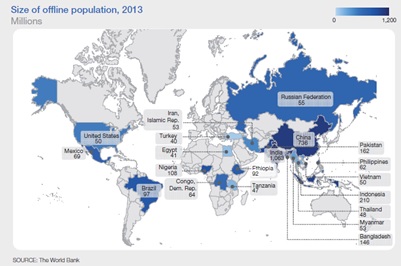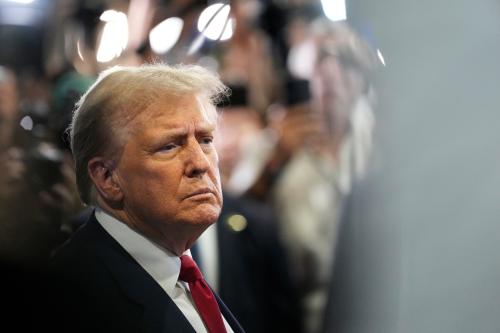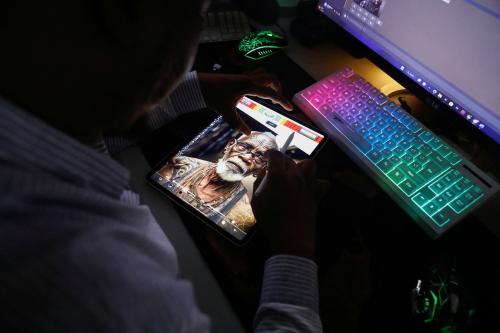Internet access has grown rapidly over the past decade and brought the benefits of the information revolution to every corner of the globe. But, a staggering number of people lack Internet access. A recent report from McKinsey & Company finds that 60 percent of people worldwide remain unconnected. Further action is needed to remove barriers to Internet access.
The offline population is similar in most countries. About 75 percent of those lacking an Internet connection are concentrated in 20 countries. India alone has over 1 billion people without Internet access. Despite comparatively lower barriers to Internet access, about 50 million Americans do not have web connections. People without Internet access are more likely to be poor, live in rural areas, and uneducated. Fifty percent of these individuals live below the poverty line in their respective countries. Sixty-four percent of them live in rural areas. About 28 percent of the offline population is illiterate while nearly every person connected to the Internet can read and write.
Twenty Countries with the Highest Offline Populations

Source: McKinsey and Company Analysis
Barriers to Internet Access
- Lack of Interest– Some people are simply not compelled to use the Internet. McKinsey found that people may not have an awareness about the myriad of information available on the Internet. Unreliable e-commerce platforms in some parts of the world in addition to government surveillance and censorship may also be contributing factors.
- Affordability– The largest obstacle to Internet access is the cost. Most individuals who make up the offline population live in poverty and therefore do not have the funds to buy a computer or pay their service providers.
- User Capability– The offline population generally cannot afford computers and tend to be digitally illiterate. This generates a culture of distrust and misunderstanding that drives away potentials users.
- Infrastructure– Some countries do not have the resources or have chosen to not invest in the necessary infrastructure to provide Internet connectivity in rural areas.
If current projections hold, 500 million to 900 million people will gain Internet access by the year 2017. Despite this trend, this will leave 4.2 billion people offline. Nonprofits, governments, device manufactures, and service providers will need to work together and innovate to tackle this pressing problem. The Internet will only increase in its importance for commerce, education, and communication. All people deserve access to the benefits of the Internet.
Matthew Mariano contributed to this post



Commentary
Barriers to Universal Internet Access
December 10, 2014